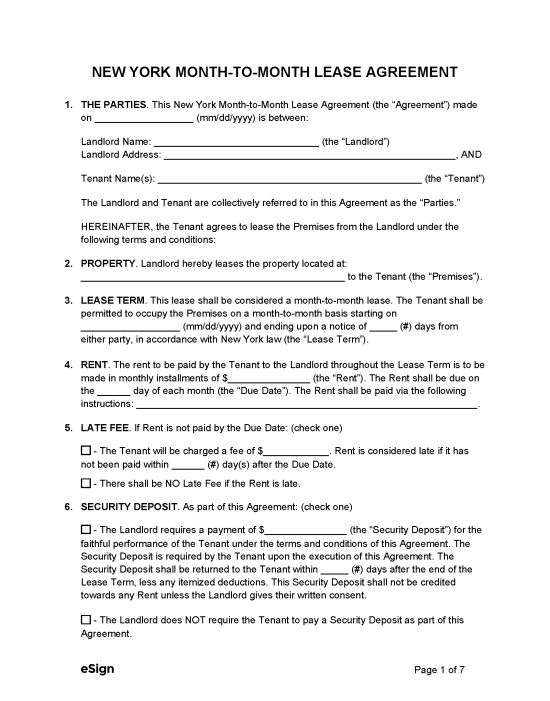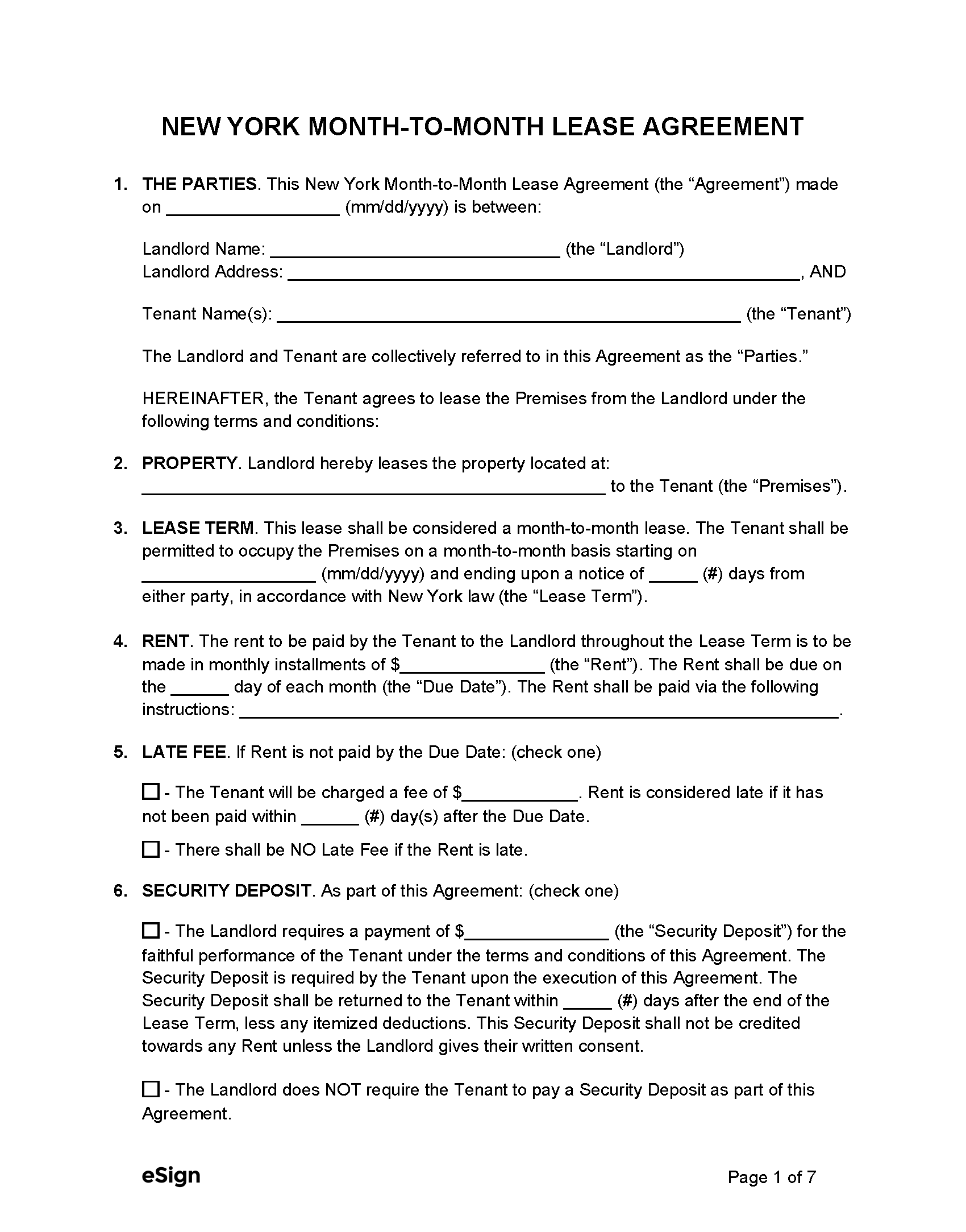Month-to-Month Laws
- Termination Notice – A notice to quit must issued one month before the termination date. If the property is in New York City, the required notice period is 30 days.[1]
- Rent Increase Notice – The following notice periods must be provided for rent increases of 5% or more[2]:
- 30 days’ notice if the tenant has occupied the unit for less than one year
- 60 days’ notice if the tenant has occupied the unit for more than one year but less than two years
- 90 days’ notice if the tenant has occupied the unit for more than two years
Required Disclosures (10)
- Allergen Hazards Disclosure (NYC Only) (PDF) – This disclosure notifies tenants that the building owner is expected to perform an annual inspection for indoor allergen hazards such as mold, insects, and rodents.[3]
- Bedbug Infestation Disclosure (NYC Only) (PDF) – Landlords must give this disclosure to tenants to reveal whether the property has a history of bedbug infestation.[4]
- Building Smoking Policy Disclosure (NYC Only) (PDF) – If a residential building contains three or more units, this disclosure is required to identify the areas where smoking is permitted, if any.[5]
- Certificate of Occupancy – Landlords with three or fewer rental units must inform tenants whether the property has a valid certificate of occupancy (if one is required) and must provide them with a copy of the certificate.[6]
- Flood Disclosure (PDF) – Each lease must disclose whether the unit has prior damage from natural flooding and whether the property is in a floodplain, as determined by the Federal Emergency Management Agency. Leases must also include a flood insurance statement.[7]
- Lead-Based Paint Disclosure (PDF) – This disclosure is required when leasing residential property built before 1978 to inform tenants whether lead-based paint is present on the premises.[8]
- Security Deposit Receipt (PDF) – If the tenant pays a security deposit, the landlord must notify the tenant of the name and address of the bank where the deposit is kept.[9]
- Sprinkler System Disclosure (PDF) – This notice must be included in all residential agreements to disclose whether the property has an operational sprinkler device.[10]
- Stove Knob Covers Disclosure (NYC Only) (PDF) – Notifies tenants that landlords are responsible for installing stove knob covers on gas-powered stoves in rental units with children under the age of six.[11]
- Window Guard Disclosure (NYC Only) (PDF) – Used to inform tenants that the landlord is required to install window guards if the property is occupied by a child aged 10 or younger.[12]

